Text
OYW 2015
By Radka Pudilova, SPP Alumni (MPA’15)

Radka at OYW2015
A week ago, the most international gathering after the last Olympics happened.
I usually tend to avoid clichés but when you attend a gathering of young people from over 190 countries and speakers including Kofi Annan, Nadya Tolokonnikova, and Muhammad Yunus, it is hard to get rid of them completely.
This year’s One Young World Summit was hosted in Bangkok and was closely tied to the upcoming climate talks in Paris (#CallOnCOP campaign) as well as the newly introduced Sustainable Development Goals (SDGs). It also provided an island of free speech in a country where people are sent for an “attitude adjustment” when their actions are perceived as a threat by the country’s junta. The young Thais certainly took full advantage of the offered free space and confronted their leaders and other speakers with questions and remarks on democracy, corruption, education, human rights, and accountability.
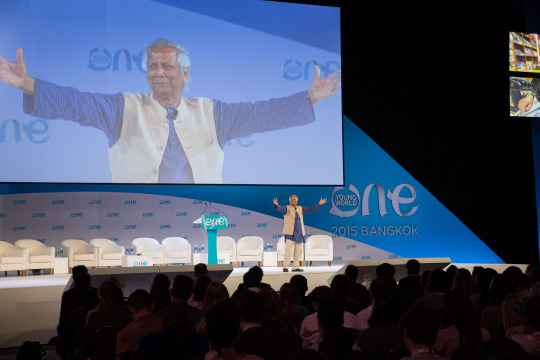
Mohammad Yunus addressing the audience and calling for rethinking economy.
They were not the only brave young people taking central stage. In each of the six plenary sessions a speaker delegate was selected presenting his or her cause. My personal favorites? Noam Shouster talking about the Palestinian-Israeli conflict (https://www.youtube.com/watch?v=wJngm-YmEOo), Lina Khalifeh on self-defense and female empowerment in the Middle East (https://www.youtube.com/watch?v=KdGonZBMRQM), and Hussain Manawer in Rising Stars session (https://www.youtube.com/watch?v=eccSodoQ2uA from 10:50 cca.).

Bangkok covered in posters and billboards advertising the event
OYW is simply the place to be. It is the best networking chance one can ever have – if you are looking for people working on issues such as human trafficking or just want to know more about corporate social responsibility, your contacts will be there. If you are looking for new ideas to implement, people to challenge your worldviews, or if you simply need to regain motivation – you will find what you need. The Summit is overwhelming, fast-paced, and demanding. For public policy students, professionals and enthusiasts it is a must.

Kamolnan Chearavanont, talking about Thai government's failure regarding human trafficking
You can watch recordings of the session at One Young World’s Youtube channel - https://www.youtube.com/user/OneYoungWorld/videos .
Feel free to contact me if you want to know more! ([email protected])
0 notes
Text
The Beauty behind Social Causes
by Luis Cano, SPP Alumni (MPA’15) communications consultant – Miss International Hungary Organization

International programs to prevent teenage pregnancy failed to reach most of the society along with many others promoting social welfare and human rights. However, media coverage of many social issues increased significantly from 2011 to 2015. The change relies on social media campaigns using celebrities, including beauty queens, as their spokespersons. Thanks to them, society is becoming more aware of the problems. Beauty queens and media personalities have a power to promote social policies just as politicians and policy makers in some countries with visible social inequality. It is our chance to use pageants as platforms for social causes and empowerment of women.
Some causes promoted by celebrities and beauty queens are more successful than those promoted by politicians or policy makers. To continue using the teenage pregnancy example, in 2011 the World Health Organization (WHO) reported that out of 1000 pregnant women, 100 were under 19 years old. By 2015 UNICEF reported that these numbers remained similar with a slight decrease. These campaigns had media advertisements and usually display numbers and a list of consequences. Somewhere in Geneva or Vienna a group of researchers thought it was a good idea to prevent teenage pregnancy by giving underage girls statistics lessons… Instead, from 2013 advertisements promoting the same causes as UNICEF or WHO started to be on Latin American and Asian TV using local beauty queens. In Venezuela, home of beauty pageants, Maria Gabriela Isler (Miss Universe 2013) ran the campaign “Si te apuras… Que ganas?” (If you hurry up… What do you gain?). Maria Gabriela has over 480k followers on Instagram where she posted about the campaign. This campaign became very popular in Latin America endorsing an influential power that a beauty queen can have on young girls.
Women in beauty pageants come out as strong and self-confident entrepreneurs. The women I have been working with from beauty pageants feel empowered. Such is the level of empowerment, that in Latin America and South Asia former national title holders are recognized as entrepreneurs and even some as successful politicians. The list of beauty queens supporting successful philanthropic causes includes: Hallee Berry, Oprah Winfrey and Irene Saez. Beauty queens are often committed to social causes and with the power of social media, they manage to influence the majority of population following these pageants.
Empowered women devoted to social issues are admired among the population as heroes. Today, UNICEF or UNHCR recognize the influence power of celebrities by working with them to promote their causes. This recognition is important as a humble step to understand the communication strategy we use to tackle social problems. Beauty queens aim to become entrepreneurs or media professionals, careers with the power to inspire others and promote change. Beauty queens are now proving to be respected as intelligent women using their authority to promote social causes.
Some beauty queens are often ridiculed for their answers in interviews or debates. However, have we ever wonder how would the majority of population would answer to the same questions we ask beauty queens? Would have we been able to answer questions about politics or sociology being 18 and studying arts? (Idea for a YouTube humor channel) Most of the women entering pageants have not had a previous education behind, and this does not undermine their motivation to help a social cause or to have a career. Beauty pageants have a chance to become schools for women who would like to pursue a career in arts and make a difference in the world. International pageants are not won anymore by a pretty girl. They are won by a prepared woman who is outspoken and able to be a voice for a cause after being educated about it. If pageants serve as a school for this women they have the chance to become strong advocates of any cause of their interest.
Beauty queens are celebrities and as celebrities they have the power to reach a significant part of the population following their careers in entertainment. We all aim to promote causes preventing gender violence, fostering poverty alleviation or health self-awareness. We have seen how these causes are better absorbed by society if a celebrity promotes it. This is our chance embrace beauty pageants and queens as the future advocates of social causes.
Photo: Stefania Fernandez / Miss Universe 2009 - Global campaign to create awareness about violence in Latin America #MissesForPeace - CR: Daniel Bracci
3 notes
·
View notes
Text
Bogota la Intensa
By Lucia Sobeková, 2nd year SPP MPA
“Too bad for you Lucia that Colombia is the first country you visit in Latin America. We say that first Latino country stays in your heart and no other place will impress you the same again,” said my colleague on the very first day of my work. I was skeptical, but I smiled back at him, thinking about what awaits me in the upcoming months. Soon began one of the most intensive summers of my life, full of experience, adventures, new people, places, tattoos, yoga and salsa. My colleague was right. Colombia got under my skin.
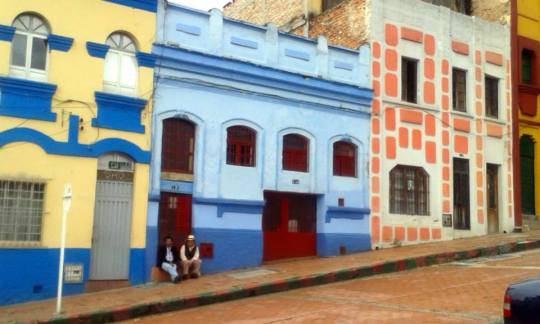
Investing in pacific future
I worked in the regional office of the International Crisis Group. My worked involved desk research about the future security reform once the peace agreement will be reached between the Colombian government and Fuerzas Armadas Revolucionarias de Colombia (FARC), the largest guerrilla. The peace talks that had been going on for three years accelerated this summer and as the final agreement is currently behind doors, the office has been busy with advising policy recommendations that would smoothen the post-conflict transition in the most affected regions.
As the Crisis Group is also my Passion Project client, I had a chance to interview many activists, academics, students and demobilized former militants about the role of civil society in post-conflict Colombia.
The most interesting event that I attended was organized by an informal peace activist group called ReD and focused on how to make sure that the demobilization of 8,000 FARC militants will be successful after reaching the peace accord. I was very disquieted to hear the story of a former guerrilla commander, who explained to me the leftist ideology that drew him to join the force (the said commander is now the head of a governmental program for reintegration of demobilized rebels in Bogota). He believed that every ex-militant deserves an opportunity to reintegrate, however, it is also the task of major society to facilitate and accept his transition to civil life.

Life with Colombians
Bogota became more intense over the weekends. My neighborhood was full of young Colombian students and artists. I mastered my Latino dancing techniques, after dancing salsa for hours and hours in crowded bars or on the streets. I climbed mountains, swam in the rivers, froze in Bogota's cold, and melted with the warmth of the Caribbean.
Colombia is a place of multiple paradoxes, where underdeveloped rural regions meet with urban ignorance. Where urban violence is translated into gangs and the rural violence into natural resources extortion and forced displacement. Where 0.4% of population owns two thirds of the lands. Where modesty and positive future forecasts prevail the inequality and ongoing internal conflicts.
Soon I understood what it is about the place that gets under your skin. It’s an average Colombian who is always friendly, and wants to show you their whole country to cheer up your day and share their culture, heritage, experiences and more.
It's the old man selling fresh orange juice with the kindest of smiles who learns your order even the second time you go to him. It's the Colombian youth who is eager to discuss education, rural development, and peace resolution to make their home a better one. I guess most of us share a similar love for our homes, whether it's a legal home or one that goes wherever you go, but the beauty of new cultures lies in their willingness to open up to you – and that's what Colombia did to me.

1 note
·
View note
Text
Kenya: Beyond Westgate

by CORINA AJDER, 1st year, SPP MPA
Almost two years after the terror attack, the Westgate mall in Nairobi reopened on Saturday. More than half of the shopowners decided to continue their business there. Families, groups of youngsters and elderly waited patiently at the entrance where they were greeted by smiling guards keen to thoroughly check their purses and pockets. The mall was packed, its cafes and shops full. In the air, there was a mix of curiosity and courage: drinking our lattes under the armed guards’ vigilant sight. We all knew that on a Saturday not that different from this one, sixty seven visitors were killed in the same place in an attack that lasted over 3 days.
Why Kenya?
Over the past years, Al-Shabaab (meaning “the youth” in Arabic) – the Islamic group associated to Al-Qaeda trying to capture power in Somalia –has been targeting Kenya as well. What is it that infuriates the Shabaab so much so as to attack their neighbour? The grouping blamed the Westgate attack on Kenya’s role in the African Union (AU) troops, AMISOM, who fight Al-Shabaab in Somalia. Apart from its coordinated actions inside the AU, Kenya has also responded unilaterally and not too strategically in 2011 by sending 2000 troops to Somalia, after al-Shabaab kidnapped some tourists in its territory. The offensive – often dubbed as military invasion – was unsuccessful in weakening Al Shabaab at home and may have created the conditions for violent responses in Kenya’s territory. The group would also want to destabilise Kenya’s government because it sees it responsible for the historic marginalisation of Muslim communities within Kenya (Kenya’s dominant religion is Christianity). But it would also seek the international visibility granted to it by carrying out attacks in a peaceful country. Despite its multiple strikes in the past years, Al-Shabaab, in reality is losing territory after their leader, Ahmed Godane, died in 2014 in an US offensive.
Inside Westgate Mall
Somalis in Kenya
Before Kenya’s 2011 offensive in Somalia, the two countries had decent and even friendly relations. Kenya is hosting the largest refugee camp in the world with over 350,000 people in Dadaab – most of them Somali who fled the war-torn country. Many Somalis have prospered in Kenya, running some of the country’s most successful businesses. In time, however, frustrations have surfaced. Kenya sees the refugee camp with suspicion and is reluctant to sustain it further - in fact, it has recently suggested closing it down altogether. And the business talent of Somalis is not always met enthusiastically by Kenyan businesspeople. All these, plus the need for a scapegoat after the Westgate attacks translated into mass arrests in Kenya’s Somali communities and in forced deportations back to Somalia (not necessarily the most secure place to be in right now). But the Government may have hunted an imaginary enemy: few Somali refugees have any link with Al-Shabaab, and the mass arrests have been perceived as an injustice risking the radicalization of Kenyan Somali youth.
Al Shabaab exploits local grievances
While Kenya continues its crackdown on outside enemies, its success in addressing internal issues, such as corruption or unemployment, is minimal. At the same time, Muslims in Kenya continue to be marginalised and Somalis demonised, with the Government’s approval and sometimes even active participation. On this background, the public’s frustration has grown alongside increasing Al-Shabaab’s support in Kenya, who successfully exploit local grievances for further expansion. In the last terror attack claimed by Al-Shabaab – which killed 148 students in Garissa – the attackers were heard speaking Swahili –and not Somali, which suggests they are likely to be local Kenyans, possibly from coastal Muslim communities. They would be attracted, among other people, by the high wages promised by Al-Shabaab, due to lack of other opportunities in Kenya, and because of its poor quality education and widespread unemployment (especially in rural areas).
This complex web of social, political and economic factors mixed with poor policies in Kenya make a new attack in the country probable. But perpetual fear is not a bulletproof vest and Kenyans have little choice but to press ahead despite the risks. For some, the Westgate mall would have been better place for a memorial for honouring the victims. For others, the reopening illustrates Kenyans’ resilience in face of tragedy. Despite differences, the mall has never been fuller than Saturday. In Nairobi, life goes on.
Corina is a summer research assistant for the Horn of Africa Project of the International Crisis Group in Nairobi, Kenya, focusing on Somalia
0 notes
Text
Adventure in the Coral Triangle
by CHUAH EE CHIA, 1st year, SPP MPA
Organisation: World Wild Fund for Nature (WWF) Malaysia’s Semporna Field Office.
Location: Semporna, Sabah, Malaysia. The Coral Triangle.
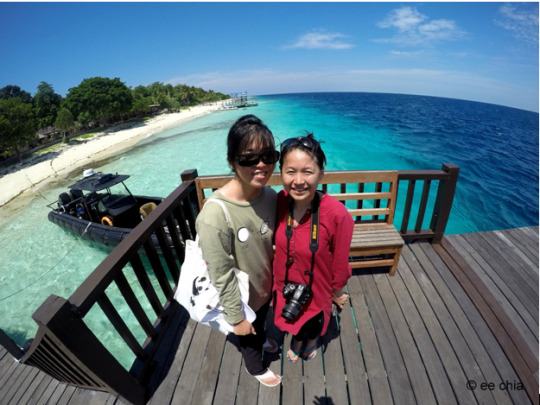
With WWF Marine Conservation Officer, Hui Ling in the Mataking Island
I arrived Semporna on a Saturday evening. The town is one hour away from the nearest airport in Tawau. It's a small tourists town, part of the Coral Triangle, the heart of the marine biodiversity on earth. It’s one of the three greatest ecological complex on earth besides the Congo Basin and the Amazon Rainforest. Most of the tourists come here for diving, as one of the islands, Sipadan is the top three dive sites in the world.
I'm staying in the in the field house with WWF staff. The Semporna Field Office have permanent staff as well as Daily Paid Assistants (DPA) who are locals. The day starts early in Semporna. By 6am, the sun is up, and by 10pm, it already feels like midnight.

Timba-Timba Island with Bohey Dulang Island in the horizon.
On my first day of work, that is last Monday, we had orientation about WWF's work in Malaysia as well as its Marine Program here in Semporna. I think WWF can be a great case study on the sustainability funding for a non-profit! There's so much to learn from them.
We (another intern, Sumira and I started on the same day!) were also introduced to two of their capacity building program for the youth and women known as Green Semporna and WAPO (Women of Omadal Island). Both are community based organisation. Green Semporna is a youth group to raise awareness on the marine conservation efforts such as turtle awareness campaign in schools, beach clean up, green school and more. WAPO is a women grassroots movement with their own turtle conservation units, seaweed cultivation and marine conservation awareness campaign. They tried to be financially sustainable through the sales of their own handicrafts. I'm inspired by their sharing. It's heartening to see how WWF work to empower the local community.
On my work, WWF is flexible, the team in Semporna is very supportive of my research interest which is the Bajau Laut sea nomads, their integration into the market and environmental sustainability (I’m aware that this research question might change as it’s too broad). So on the first day, I had a session with the experienced DPA, Adzmin who’s also the Green Semporna’s mover, about my possible field work at a few islands where the Bajau Laut community resides. I'm also asked to survey on the Live Reef Fish Trade supply chain in Semporna by my supervisor, as the Bajau Laut are one of the main supplier for this trade.
On my second day of work, I joined the Marine Conservation Officer, Hui Ling to a few islands to survey the turtle nestings! The nesting survey is important to see the trends of returning females and if the hatchery practices help increase population of the turtles. In addition, the data helps WWF to track for emerging trends in helping to sustain the turtle’s global population.

WWF's Marine Conservation Officer (MPO) Hui Ling recording the turtle's nest GPS coordinates.
The islands are beautiful, but unfortunately many of them are privately owned. The resorts on those island are expensive. There have also been a few kidnapping cases by the pirates from the Southern Philippines. Therefore, curfew has been issued to manage the security risks risen from the series of incidents in Semporna. All travelling boats especially dive boats have to include escorts from the enforcement agencies (ESSCOM) to ensure safety. In our field trip, we were also accompanied by the officers from ESSCOM for safety. So, it's relatively safe for us.
At one island, we saw hundreds of baby turtles that will be released to the ocean once they are big enough. However, according to Hui Ling, it’s better for the baby turtle to leave to the sea immediately upon hatching because that moment they have a lot of energy to swim further away into deep sea. There, they are safe from the predators. Also, the chance for survival is higher as
they learn to find food in the wild compared to the baby turtles who were fed by human at the beginning.At another empty island without resort, but still privately owned, the Timba-Timba island, I saw how the white sand beach was filled with plastic bottles and other rubbish along its coastline. It was a heartbreaking scene. We should really consider our plastic usage and how it might destruct the environment! Every year, about five to 13 million tons of plastic travelled from the inland to our oceans, killing thousands of sea turtles, seabirds and marine mammals!
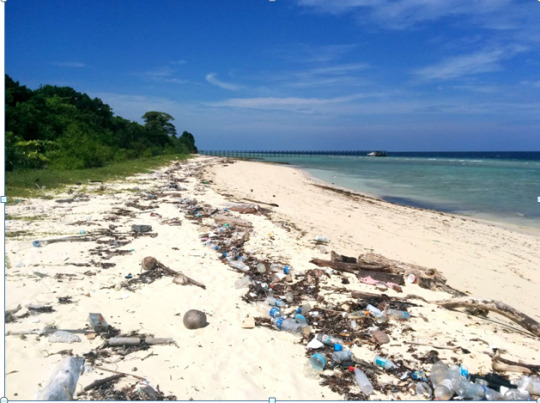
Beach filled with plastic and rubbish in Timba-Timba island.
So, unfortunately for me, I didn't stay in the beautiful island, but in the coastal town without a beach . So far, I'm happy with my experience, it doesn't feel like I'm working, but in the midst of an adventure! It feels amazing to be in the Coral Triangle, to try to understand more about its marine lives, trade, people and of course to enjoy its breathtaking scenery, after reading so much about it.

Mataking Island
I’m truly thankful to WWF Semporna Field Office for their warmth hospitality in making me feel like family and especially going all ways to help me make my fieldwork a possibility!
0 notes
Text
Greece’s Detention Policy in the Absence of Migration Policy
by ZOE KOSTITSI-PAPASTATHOPOULOU, 1st year, SPP MPA
The Amygdaleza detention center currently hosts approximately 1,800 of Greece’s estimated 6,000 imprisoned immigrants. Greece has, in recent years, undoubtedly become the main point of entry into the European Union due to tighter controls elsewhere across the EU’s Mediterranean frontiers. About 90 percent of the EU’s undocumented migrants, amounting to about 130,000, cross into the 28-member bloc through Greece each year.
In the absence of any migration policy or strategy, the use of systematic and indefinite detention formally became Greece’s priority last year when the former government announced that “Our aim is that every illegal migrant, unless the competent authorities decide that he is entitled to international protection, will be detained until he is returned to his home country”.
The introduction of indiscriminate and indefinite detention into the Greek legal order were among the most radical changes the former government did with an obvious inability to tackle the problem and develop a migration policy. The detention of irregular migrants has been both widespread and marked by a growing trend to circumvent the maximum allowed period. As a result, Greece was repeatedly convicted by the European Court of Human Rights, both with regards to the conditions of detention and the arbitrariness and automatic manner in which migrants were deprived of their liberty. Nonetheless, Greece upheld its detention policy; it carried out a series of legislative amendments, in order to ‘legalise’ its practices, in line with a toughening policy towards irregular migrants followed by other Member States.
However, Greece’s indiscriminate detention policy cannot be legitimate. First, from the perspective of international human rights law, detaining an irregular migrant in the context of removal processes is considered a particularly harsh measure, only exceptionally allowed and under very specific requirements. It violates international human rights law which requires respect for the inherent dignity of the human person; guarantees the right to due process of law; and prohibits arbitrary detention. Second, detention has also proven to be a particularly costly enterprise. It exceeds Greece’s current budget. The average cost of detaining an irregular immigrant in Greece is 16 euros/ per day. Detention costs Greece and the EU a minimum of EUR 28,713,600 per year.
So what happens for the time being in Greece is in simple terms an inadequate response to irregular migration that both costs the Greek citizen a fortune and causes deaths and humiliation of the person. Syriza seems to have acknowledged the fact. In a response to the desperation and the recent suicide committed by 28-year-old Mohammed Nadim, who came from Pakistan and had been held in the center for 25 months, Syriza announced the closing down of the detention centers. Mohammed’s suicide, who used a towel to hang himself from his bunk bed, sparked a wave of protests and riots inside the Amygdaleza detention center. After the riots took place, Syriza freed 18 migrants from Amygdaleza.
But is that enough? Is this a beginning of a new policy that recognizes irregular migrants’ rights or is it merely a reaction to an incident to ease the situation? Things often don’t get better once migrants are out of detention. If released, migrants, including unaccompanied minors, are left to survive on their own and often end up homeless. In 2012, the Guardian reported that there were around 5,000 migrants living in an estimated 500 abandoned buildings, most of which were deemed unfit for human habitation.
Uncontrolled and arbitrary release is not a solution. It’s time for Greece to develop a holistic migration and asylum policy that corresponds to the irregular migration flows that Greece is facing, respects human dignity and the international human rights law. A policy that would reduce the human cost of migration and would respect asylees rights.
The new government has a big challenge to face. The establishment of the new Ministry of Migration is already a first step. But we shall not forget that in the Greek recent history the creation of ministries and organizations has been a fashionable political trend and this time reality and the current circumstances call for a change in policy; its urgent formulation and implementation.
This article first appeared in http://politheor.net/greeces-detention-policy-in-the-absence-of-migration-policy/
0 notes
Text
Exploring Ruin Bars

by ZINTIS HERMANSONS, 2nd year, SPP MPA
In 2012 Lonely Planet cameup with a list of 100 top bars worldwide giving third place to the well-known ruin pub called “Szimpla Kert” located in 7thdistrict of Budapest. If one looks at the World Wide Web and tries to figure out what Budapest is famous for, the so called “ruin bars” constantly appear as top destinations for the nightlife and entertainment options. As I had an opportunity to take a course on urban policies and global cities, it seemed like a perfect opportunity to do more research on the ruin bars of Budapest. Mostly, it is because there is more to a ruin pub than to put a bar in an abandoned building or garden. It is also more than an original idea on how to cultivate business and attract tourists. Lastly, my friends and I usually end up at the same ruin bars but there is not much more that we know about pubs that we still haven’t visited and whether it is something to worry about in terms of good vibe missed.
Initial look at the CEU library electronic resources revealed that indeed the topic has been explored in many master thesises - ruin bars have been analyzed as a coherent part of urban planning and development. My search for academic articles was also rewarding - there are many articles published in academically peer reviewed journals, looking how ruin bars are related to various forms of hospitality, urban transformation and gentrification processes. In essence, the simplicity of the exteriors and the rough and crude interiors might create an impression that the ruin pub experience can be only reduced to bare enjoyments of having drinks with no pretensions to something more delicate. However, as pointed out by academic articles and numerous internet resources which in one way or other mention ruin pubs, that they are venues that host intellectual debates, book launches, exhibitions, fashion shows and musical concerts.
As I am into data analysis, I decided to do something with the data at hand. I was interested in spatial distribution of ruin bars and their popularity – mainly to have more evidence based idea what is more out there besides what I have seen. The exact number of ruin pubs might be disputed, because clearly when cruising around inner Budapest one may encounter many places looking like ruin pubs, especially during the summer when many outdoors-only places operate. Nevertheless, I have come across the list of 20 (http://www.ruinpubs.com ), which I use as my reference.
I decided to explore social media data to gain insight regarding ruin pub popularity. I used ruin pub public Facebook pages (all ruin pubs have such pages) to determine which ruin pubs are the most popular. I reduced my analysis to amount of “likes” given to particular page which I think is a fair measure to approximate in statistical terms how often people in general go to a particular ruin pub. From statistical tables I put my analysis into graphical representation. I converted all addresses of ruin bars into latitude and longitude values and using geographical information system (GIS) that displayed ruin bar locations on the World Street Map (developed by ESRI) joining them with my popularity measure.
Ruinpubs are mostly concentrated in districts VI and VII. Surprisingly, “Instant” seems to be the most popular pub having over 171 176 Facebook likes. I had expected “Szimpla Kert” to take the lead. However, as much as a particular ruin pub popularity corresponds to what I generally expected, there is much more to explore. Upcoming warmer weather would be perfect occasion for that as ruin bars are in vogue during that time.
0 notes
Text
The Future of Think Tanks (in Public Policy)

by RADKA PUDILOVA, 2nd year, SPP MPA
While indices are definitely not all-encompassing, they play an instrumental role in mapping the diverse landscape of organizations, such as think tanks. The Go To Index works with a database of over 6000 think tanks from all the corners of the world from the well-known ones (yes, Carnegie and Chatham) to the lesser-known such as Center for Policy Studies (at CEU!).
This year's launch in the Czech Republic was accompanied by a panel discussion on the co-operation between public/state administration and think tanks. That is certainly an interesting topic, given that the Czech language struggles to find a Czech equivalent for the concept of think tanks and people find it hard to imagine what actually happens behind the pretty logos and lengthy reports.
As always, there are good and bad news. The good news is that the co-operation is improving, at least in some sectors. The bad one: this is partially due to the fact that public administration loses its analytical capabilities and thus 'contracts' them out.
Part of the problem is that very few people in the Czech Republic circulate between state institutions and think tanks. Sure, our former president (Vaclav Klaus) created his own institute, but as one of the panelists Ondrej Liska (former Minister of Education) contended: it is just a vehicle for self-promotion without much team effort. He also signaled that while the situation improves in areas of foreign policy or national defense, other domains like education remain largely neglected. Liska believes that this can be overcome in the future if the think tanks become more politicized - in the sense of policy, not politics.
Vit Dostal, member of Association for International Questions (3rd to-watch think tank worldwide!), also recognized that although there is some overlap between administration's demand and sector's supply, in essence the state administration responds to immediate political needs while think tanks are in for longer term trend observations. That is why we have something to look for in post-2020 as the Czech think tanks shall have more impact on policies than they have had so far. What could contribute to such a transformation would be a process of institutionalizing existing personal ties and thus make them more sustainable. Other possibility is heightened co-operation between think tanks - such as IRSEC Hub platform (http://irsec-hub.org) which gathers think tanks from Visegrad Four countries (and where I happen tointern at the moment).
Great debate also emerges about the funding of such endeavors. If the think tanks do not want to depend on the agendas of European institutions, they would need "enlightened capitalist", like George Soros, to enter the field and agree to certain transparency principles.
It seems that think tanks are here to stay. They may eventually adopt the strategies of their US counterparts, who are widely considered as the successful ones, or figure out other ways of survival. Dialogue will play a major role in their future - whether with government, donors, or public in general.
Check the Go to Think Tank Index here and find your new favorite think tank: http://repository.upenn.edu/cgi/viewcontent.cgi?article=1008&context=think_tanks
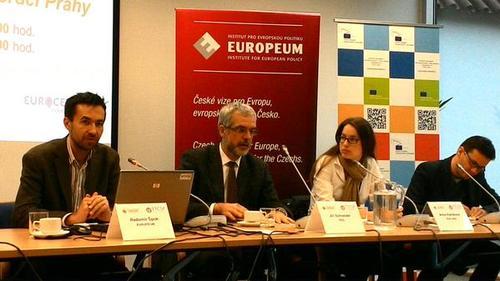
0 notes
Text
Ideas from Hong Kong: Imagining a Global Living Wage
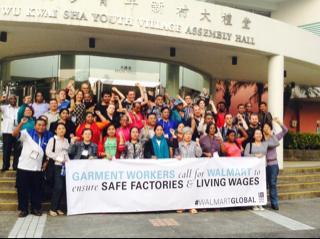
by CORINA AJDER, 1st year, SPP MPA
Half-way through my SPP course on Chinese Politics – which evolved as weekly sessions of having my worldview turned progressively upside down – and just as the protests in Hong Kong unraveled, I got to visit Hong Kong for a conference with my former job.
My initial interest was spinning in circles around the protest sites, but soon the global conference on labor rights for which I was actually there for turned out to be very exciting. Trade unions, NGOs, and organizations from 46 countries in all continents were there for the Clean Clothes Campaign’s Global Forum on labor rights. A not-at-all boring event showing how policy is planned and pushed from the bottom-up.
The Clean Clothes Campaign is a global network of NGOs that dvocates better working conditions in the global garment industry. It did and still does a lot of work in Asia. It expanded recently to Eastern Europe. There has been ample research for the first time at the region’s garment factories – a new destination for fashion brands eager to write “Made in Europe” on their labels. Many of my interviews with factory workers in Moldova, Romania and Ukraine in 2012-2013 showed that “Made in Europe” rarely equals fair work as companies often profit from weak labor laws and small wages in Eastern European countries to the loss of the workers. Average wages in Moldova’s garment industry, for instance, cover only 20% of the official subsistence minimum. This is not an uncommon situation at a global scale. In spite of long working hours each day, the average garment worker for fashion brands is out of money every single month.
Of the three main areas discussed at the conference - worker wages, safety conditions and precarious employment – the first captured my attention the most. Can we have a global living wage? That is a salary that would provide all garment workers with enough money to live a decent life for themselves and their family. If the question seems taken from the same bag of dilemmas which contain “will there ever be a world government?” and “did the Big Bang really happen?”, I encourage you to give it a robust chance. Multinationals have a great deal of power to move businesses from one country to another as work becomes more expensive and wages go up. Governments are then afraid to raise minimum wages to avoid losing investors. A regional floor wage – calculated, for instance, by Purchasing Power Parity to ensure some universal applicability – has the real potential to balance the interests of businesses, governments, and workers in the industry. The organization’s Asia Floor Wage initiative shows that we can know how much a worker needs to live decently in any Asian country. The global civil society can make these numbers visible to the public, states, and brands; and pressure for changes.
Small wages, however, are not an “Asian problem” anymore. A similar calculation would be quite welcomed in Europe too; where wage disparities are huge despite similar regional living costs. Moldova’s minimum wage is approximately EUR 88 a month – which is, by the way, one third of that of China’s Guangdong (EUR 242), where most textile factories are located. But it is also one of the lowest in Europe compared to Romania’s EUR 217 or Macedonia’s EUR 198. The bottom-line is this: to get their power back governments have to work together to ensure that no company can threaten relocation for simply paying workers a decent wage.
Can any of this be achieved in the foreseeable future? At least from Hong Kong, being part of an energetic social movement where people so different work together enthusiastically for common goals – a lot of great things seem possible. So let us see and do!
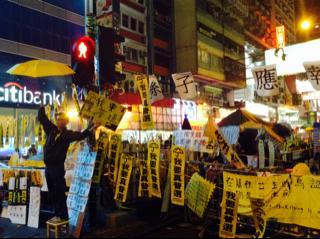
City Protests in Hong Kong
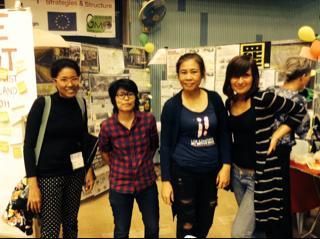
Corina with colleagues at the Conference
0 notes
Text
Policy Cafe at CEU

A unique wave spread over the SPP and the DPP in the last week of November, talk of which continued even in December amidst all the end of Semester workload. That wave was that of the Policy Cafe - an exciting initiative by the students of the SPP, especially Nuruddin Ahmed Bappy, a first year SPP student. This Cafe is a first step to utilize the knowledge and experience of the rich pool of student body within the SPP and DPP to analyze relevant global issues and provide unique solutions to such. It is also a common platform for both the departments to work hand in hand in the long run. Saman Sardar maintains and publishes the blog on the Policy Cafe while Fai Suluck manages its social media content. Together the trio have created a strong buzz around this initiative and are constantly thinking of ways to make this experience as enriching as possible. In the first session, Friederike von Cölln, Kata Nemeth and Victor Mercador spoke about educational policies and projects from round the globe. Everyone is looking forward to the upcoming editions of the Policy Cafe and towards tapping into the vast pool of knowledge lying at the disposal of the students.


0 notes
Text
Legal Empowerment in South Asia
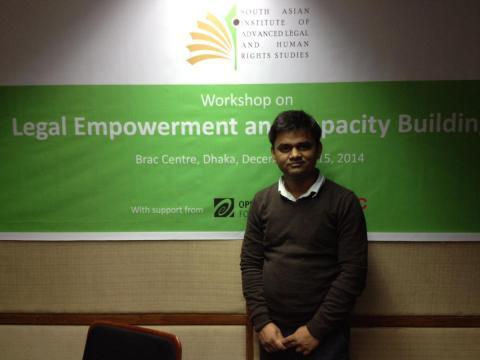
by PRATIK PHADKULE, 2nd year, SPP MPA
It is apparent that for the last 15 years, the international development and aid sector was solely driven by the force of Millennium Development Goals which are famously known by its acronym as ‘MDGs’. MDGs were adopted at the Millennium Summit of the UN in 2000 where the world leaders and prominent international development organizations committed themselves to reduce poverty and other time bound development targets with a deadline of 2015.
The eight millennium development goals talks about all important issues such as hunger and poverty, education, gender equality, child and maternal mortality, HIV/AIDS, malaria and environment sustainability but does not talk about one essential component in the absence of which it is extremely difficult to achieve development goals of reducing poverty and inequality. The essential component is the “access to justice” for all especially, for the poor and marginalized. The access to justice can also be interpreted as the ‘rule of law’ as it is self expressive that only when there is the rule of law, there can be an access to justice for poor and powerless.
The review on the progress of the MDGs revealed significant shortcomings. It has been now well acknowledged that it is important to work on ensuring legal empowerment of the poor for their access to justice in order to achieve development goals. As the deadline for the MDGs coming to an end and much progress on them yet to be achieved, the debate on post-2015 agenda has become hot. Based on the work that has already been done on the MDGs a set of sustainable development goals (SDGs) has been developed. The 16th goal clearly talks about ‘providing access to justice for all.’
It is on this background, to take utmost benefit of the opportunity created by the SDGs and post 2015 development agenda to work towards creating more inclusive, sustainable and just societies, the international and national development organizations and aid providers and assistance providers are working on creating a pool of professionals and practitioners with essential knowledge and skills in the area of access to justice for sustainable development.
The workshop on Legal Empowerment and Development in Dhaka:
On the 14th and 15th of December, 2014 a two day regional workshop on legal empowerment and development was organized by The South Asian Institute of Advanced Legal and Human Rights Studies (SAILS) based in Dhaka, Bangladesh. The aim of the workshop was to bring together the organizations working in the south Asia region on legal empowerment, access to justice and development to exchange ideas on designing a training program on legal empowerment for different actors such as professionals working in the NGOs, CBOs and also law students.
The workshop was divided into different sessions in which the participants were divided into different groups to brainstorm on different components of the training programs such as – content of the training, who should be the participants, how do they should be selected, who should be the trainers, quality control of the training programs etc. The participants were from different countries in south Asia such as India, Bangladesh, Pakistan, Nepal and Myanmar. Apart from the representatives from organizations in these countries, the representatives from Open Society Foundations offices in Budapest and the USA, Dr Bernhard and me from SPP, CEU were present.
The workshop was aimed at designing a course focused on south Asian context; nonetheless it was important for my understanding of the field of legal empowerment through community legal aid services and paralegals.
Experience and Learning:
From this workshop, I got introduced to the intervention of community legal services by which poor, illiterate or semi literate people can be empowered by the means of legal knowledge and mediation and through which access to justice can be brought about to them.
Access to justice is extremely important in order to effectively tackle poverty and achieve development goals for all sections in the society because it is the lack of knowledge of their rights and legal remedies available which prevents the poor from overcoming the situations of deprivations.
The main areas in which legal empowerment courses needs to focus on especially in the south Asian region are – citizenship and legal identity, women’s empowerment and access to justice, human rights and use of traditional, local justice institutions. Another important area is the land rights and land disputes because of which there are many cases where poor farmers face a lot of problems.
The role of community based paralegals and a community worker is significant. There are many organizations working in Bangladesh and other south Asian countries which have employed community workers those go out in the community, talk to the people, mediate and provide knowledge about the legal remedies available to them. The cases, in which the community workers have been proved to be the most effective, are the domestic violence cases and disputes in which earlier women used to keep quiet because of the lack of knowledge and support.
Attending this meeting was a learning experience as people from the same continent but from different cultural and social backgrounds with still different levels of work experience and expertise over the came together to exchange ideas.
0 notes
Text
Justice for Mexicans!
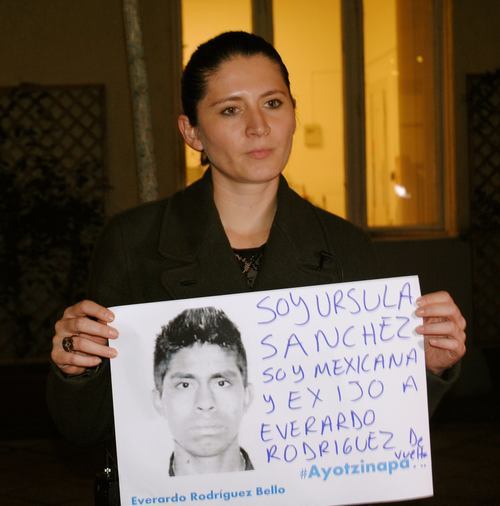
by URSULA SANCHEZ, 1st year, SPP MPA
On September 26, a group of 43 students from the rural teaching school in the small town of Ayotzinapa, in the state of Guerrero – one of the poorest states in Mexico and in the region - were taken away by the municipal police. This is not an isolated tragedy. In Mexico more than 20,000 people are missing and more than 100,000 have been killed. This is the aftermath of the war on drugs that has led to violence and the loss of governance structure in many states across the country.
To raise awareness about this situation and to show our solidarity to the families in Mexico we have been doing a series of activities. First, we signed a petition to demand that the Mexican Government presents the 43 students alive and delivered it to the Mexican Embassy in Hungary. Second, we set up an altar at CEU, as part of out “Day of dead (Día de muertos)” Celebration in Mexico to honor the 43 missing students and the 100,000 dead people as a result of the war on drugs. Third, we held a discussion session with CEU students to reflect on the topic "Who´s ruling Mexico?" especially since the war on drugs started. And finally we conducted a video-campaign to demand the return of each of the 43 missing students as well as to show our solidarity with the families that have lost their sons and people from Mexico who are now grieving.
Event at CEU
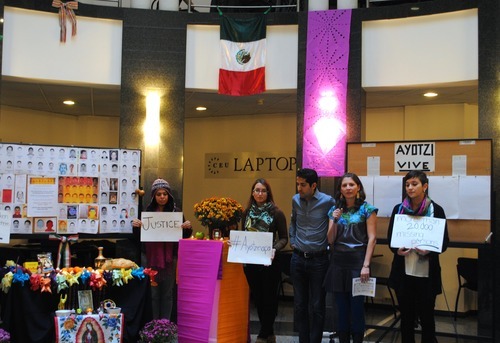
Altar of "Dia de muertos"

0 notes
Text
Uganda: The Run-up to the 2016 Elections

by PASQUALINO OKELLO, 2nd Year SPP MPA
Having faced resistance from within his party, it was unclear whether President Yoweri Museveni – who has ruled Uganda for almost 30 years – would be nominated by The National Resistance Movement (NRM) – to stand again in 2016. But a controversial resolution by NRM Parliamentary caucus passed in February 2014 in Kyankwanzi has allowed the President to run uncontested in the general election. Nevertheless, tensions are mounting. The NRM government has for the most part failed to deliver on its promises during its many years in power. Ugandans face skyrocketing unemployment, never–ending corruption scandals, and, worst of all, frequent tribal clashes such as those that occurred recently between the Bakonzo and Bamba in western Uganda that left over 85 people dead in the districts of Ntoroko, Bundibugyo, and Kasese.
Although the elections are more than a year away, it is not too soon to draw two main conclusions.
First, the tribal violence in Uganda tends to be expressed in one of two ways. The first involves the police – alongside the army – against loyalists of a particular tribe, as was the case involving the Baganda in September 2009. The second involves fighting within a tribal community for power and resources as was seen among the Bakonzo and Bamba tribes this past July. Those who suggest that these clashes have reduced the popularity of the ruling party are mistaken. Former Commander and Coordinator of Intelligence; General David Tinyefuza who has fallen out with the regime but retains insight into how presidential elections in Uganda are won, told the BBC in an interview that such contests are always manipulated to benefit the ruling party; in the first instance, bribes are paid to lay the ground work to ensure a particular election outcome. It is likely therefore that the NRM will win irrespective of the tribal troubles.
Secondly, there is growing political tension within the NRM, as seen in the controversy surrounding the resolution that enabled President Museveni’s sole candidacy. That the same resolution also led to the removal of the prominent “Super Minister”, former Prime Minister Amama Mbabazi, from cabinet. These changes are not an indication, however, that the party is weakening. President Museveni’s style of uprooting opponents, especially those he considers competitors, is nothing new. It is the same approach that helped him remove party foes in the past, like Eriya Kategaya, Bidandi Ssali, and Miria Matemebe when they opposed the removal of presidential term limits.
It would be a very big surprise if there is not another NRM victory in 2016. Moreover, a small bottle of our favorite local brew, “Kasese Kasese”, will win a Ugandan election, as long as it is bought continuously near the voting day – a practice the NRM is known for. This is the political foul play in my country today.
0 notes
Text
The Global Marketplace of Political Transition —the Case of Bangladesh
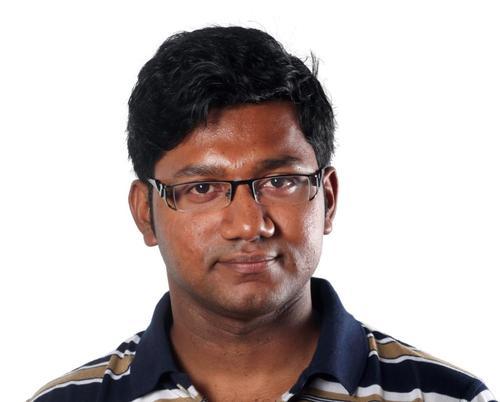
by Nuruddin Ahmed (MPA '16, Bangladesh)
In a post-American, post-Western world — what to make of the political transitions?
In January 2014, the US lost to India in shaping Bangladesh’s future when Bangladesh held a controversial national election on January 5, 2014 despite US disapproval. How did Bangladesh do this? Although the election did not have the global superpower’s backing, it did have undivided support from the regional big brother, India. This allowed Bangladesh’s ruling party to force an arguably farcical election on the nation, where the majority of the seats went uncontested and fell neatly into the ruling party’s lap, thereby extending the India-friendly government’s seat in power.
The growing encroachment on civil liberties before the elections, and quite definitely after (note the case of the young man sent to prison for over half a decade for making disparaging remarks about the Prime Minister on Facebook), shows the election has paved the way for autocracy in the country. The fact that this took place in the teeth of US opposition is a sure sign that we have begun our foray in the post-American world.
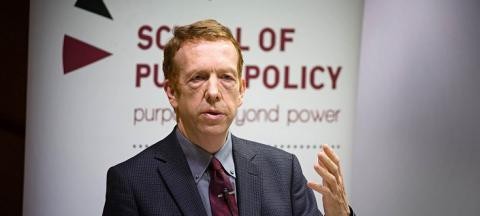
Photo credit School of Public Policy
I went to Thomas Carothers’ lecture on last Monday evening at the School of Public Policy, Central European University, because I was curious what he has to say about this — the political transition process and the Western influence on the whole shebang. Carothers is the vice president for studies at the Carnegie Endowment for International Peace and also a Distinguished Visiting Professor at the School of Public Policy . He is very influential, particularly in the area of democratization.
“In the global marketplace each country pursues its own interest “ — Thomas Carothers
Carothers’ opinions were very straight forward. And very uncomfortable for some. He noted the world doesn’t predominantly have just Western actors any more. There are many new actors in this new environment, which he calls “the global marketplace”. These actors are diverse in multiple ways. They use money; they use military power; their motives are complex. There is a common assumption that autocratic countries promote autocracies. But does the reverse hold true? Do democratic countries promote democracy? To Carothers, this is simply not the case. As he put it, “They pursue their own interests.” He thinks regional actors play the game even better — they are patient, and their arsenal of persuasive techniques is varied. Countries like Brazil, Iran, Russia, Qatar, India play a very strong role in their neighboring countries, much more so than US/West can.
Carothers is right that democracies are not out to promote democracy, “democratic” India helped to make Bangladesh a non-democracy not because of its ideology but because of its own interest. Although most major players of the Western diplomatic arena boycotted the Jan 5 election, Indian Foreign Secretary Sujata Singh insisted, “For building democratic institutions, the election must be held.” Carothers thesis is seen amply at play here.
Perhaps the most poignant moment of the lecture was when Carothers gave an example of the mobile cell towers. In the past there was only the West — a single cell tower — from where all the ‘signals’ used to emanate. But now there are many cell towers and ‘signals’ emanate from each cell. In Bangladesh’s case, India was the nearest, and therefore the strongest, cell tower.

I found Carothers’ observation deeply pragmatic and realistic. I was glad that I learned something from him, yet I didn’t come away with my curiosity fully satiated. Now I have even more questions than answers. What about the small countries, what is their place in this marketplace? What happens when the ‘signals’ overlap? What is the place of the liberal democracy in this global bazaar?
0 notes
Text
(N)Ever Again...
by Nataliya Novakova (MPA Candidate '16, Ukriane)
She still almost cries when she speaks about her family killed during the genocide. And then she laughs remembering her fellow Rwandans working together to support those who stayed alive. She is Esther, a woman who survived. In the aftermath of the genocide she started an NGO - Widows Association - to help people get over the stress together, to collect food and clothes for children, to get medicine for raped and HIV positive women.

Photo: http://voiceseducation.org
Jean-Damascene Gasanabo, Director General of the Center on Genocide within the National Commission for the Fight Against Genocide, Ian Martin, former Special Representative of the Secretary-General and the Head of the UN Support Mission in Libya, Esther Mujawayo, sociologist in a psychosocial center for refugees in Dusseldorf, Charles Petrie, former Chief of the UN Emergency Unit in Sudan were brought together as the panelists for Lemkin Reunion, an annual event hosted by the Center for Conflict Negotiation and Recovery of the School of Public Policy.
What Esther says is often unconventional. She openly states that the reconciliation is the term for outsiders. Those who survived a genocide cannot reconcile. No, she does not hate Hutu in general. Yes, she believes that difference between Hutu and Tutsi is artificial. She says: “Who asks us to reconcile? Church? Those who ran away?” But she demands justice. And justice should start with those who created the conflict. Esther remembers that it were Belgians who introduced ID Cards specifying ethnicity. She remembers how Belgians were evacuated from Kigali. Evacuated with their beloved cats and dogs, they refused to take Esther’s children to France where other relatives were waiting for them.
Actually Esther and Jean-Damascene reveal many pitfalls of internationals. The problems they are pointing out are very easy to explain from programmatic standpoint and yet too hard for a human being to accept. Why during International Criminal Tribunal for Rwanda (ICTR) hearings medicines were not provided for HIV positive female witnesses? Of course because ICTR could not process such expenses, as there was no such policy, or at least they needed special approval from the management, which would require tons of paperwork and headache. But yet, how did they look in the eyes of those women and said “no”? How did Red Cross office in Geneva refuse to send their people to save relatives of Jean-Damascene Gasanabo? Of course they could not risk lives of their staff. Red Cross could not save lives of everyone, it is not even the objective of the organization. And yet, how was it possible to say “no”?
Esther stays on the positive side, saying it was the closed doors of international organizations, which made Rwandans stand on their feet and find strength to start from the scratch relying only on their own resources. They had to learn how to be alive again: how to greet people, how to smile, how to return to destroyed homes and rebuild everything. In 20 years after the genocide it still hurts. Jean-Damascene Gasanabo says the decision was made not to study the genocide period in schools at all, because it is yet impossible to speak about the problems in the mixed classes of Tutsi and Hutu children. Careful research is going on and you have to be very cautious to preserve fragile peace.
The bigger picture about Rwanda is that it was a clear case of genocide but no one dared to officially call it that way. CEU Rector John Shattuck, who was an Assistant Secretary of State for Democracy, Human Rights and Labor at that time recalls his press-conference, when he was one of the first US officials publicly stating that what happened in Rwanda was a genocide. It was told then that his position did not reflect the position of the US government. And the reason was in the UN Convention on the Prevention and Punishment of the Crime of Genocide. After the treaty was ratified, each crime defined as genocide, required action of the international community.
The remarkable document was passed in large extent due to the huge lobbying effort of one man – Raphael Lemkin. A lawyer, who started his way from the simple question: “Why is the killing of a million a lesser crime than the killing of a single individual?” He became an author of the term “genocide” and literally devoted his life to making genocide a crime. The convention is a remarkable document, a breakthrough in international law. And yet it leaves too much space between recognition of the fact and the policy decision to deploy international forces on the ground and protect victims. In 20 years after Rwanda the world has not achieved much progress on the matter and it is huge responsibility upon policy makers and activists to finish great project started by Raphael Lemkin.
0 notes
Text
When the global marketplace becomes a bazaar

by Natalia Novakova (MPA '16, Ukraine)
That night Thomas Carothers spoke on the global change and juggled with the names of multiple actors, which shape the process. We used to live in the simple world. There were developed countries – rich donors with impressive GDPs, track record of good governance and undoubted achievement of democracy, human rights and all sorts of things, which we usually consider to be virtues of advanced society. On the other side was a camp of late developing countries striving for prosperity, peace, sustainability and social security for the citizens. The picture was simple. The first knew how to do things, the second strived to copy/implement/ adjust to become a little closer to the prosperous camp. In this world western states, or Global North was sending its advisors overseas to teach, request adjustment, provide money and request implementation of particular policy solutions.
The current game is more about building networks of allies and spreading influence. But the question is if the West (EU and US) is ready to play in this new multifaceted reality? It is no longer possible to leave the proposal on the table and wait while the partner comes, as much more attractive deal might be brokered by another regional player.
Together with this, the very discourse has been modified. The word transition is gradually disappearing giving the place to broader term – “change”. Developing countries are more and more reluctant to use the term “transition” because of its negative connotations with riots, structural adjustments, strict norms and standards dictated by the West. And the very idea of transition no longer seems to be relevant. It is too straightforward and positivist assumption to see the world coming from the bottom up to one unquestionable goal with the values of liberal democracy on the top.
The fact is that the world becomes more multilateral, competition for influence and subsequent regionalization grows. It might bring instability, it might make global policy more unpredictable, and it might shift the balance of powers. The competition for the influence and competition of the visions of desirable future becomes more severe. It is not necessarily the bad news. All of us have been taught that the competition is progress and development. It is just the new reality, where currently the West seems to lose its unquestionable advantage in shaping the playing field. And we do not know yet who is going to lose or win.
0 notes
Text
Summer Internship at International Crisis Group in Brussels, Belgium
by Bashir Ahmad (MPA '15, Pakistan)
The de facto capital of Europe is Brussels, which has been a center since World War II for the EU Institutions, the headquarters of North Atlantic Treaty Organization (NATO), international organizations, politicians and diplomats. The city is also well known for its amazing social life, museums, comics, festivals and best cuisines.
This summer I did my internship with International Crisis Group in Brussels, Belgium. Crisis Group is an independent, non-profit, non-governmental organisation committed to preventing and resolving deadly conflicts around the world. During my internship I enjoyed my work as part of Development team. Despite my work, I really liked and enjoyed two things at Crisis Group:
Professional multicultural and competent environment, equal treatment of employees and interns which provide an opportunity to learn from each other.
Pad Thai Food! Every Wednesday most of the interns and staff goes to the open market next to the office to enjoy fresh and warm food. Pad Thai Food is very popular and most liked food among the Crisis Group community and recommend to every new interns and staff members.
During my internship I had the opportunity to explore Beliguim and met with different people from different parts of the world.
Gent Festival
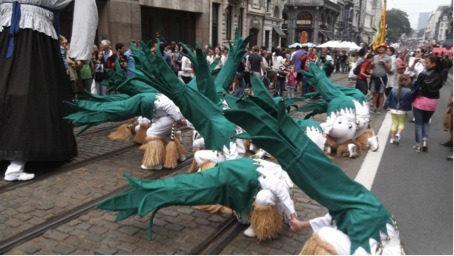
Flower carpet. It was introduced in 1971 by E.Stautemans to promote his beloved begonias. The beauty of the flowers is that they stay fresh for so long. Thousands of people from Belgium and around Europe come to amuse from beauty of these flowers.
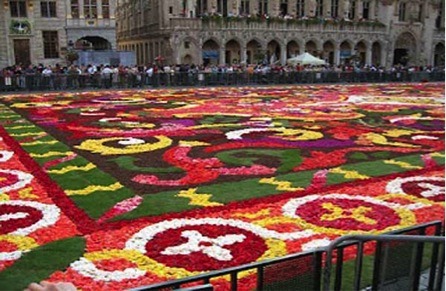
View from my office window of “Avenue Louise”

“Atomium Brussels” constructed in 1956 during the Expo, Brussels world’s fair
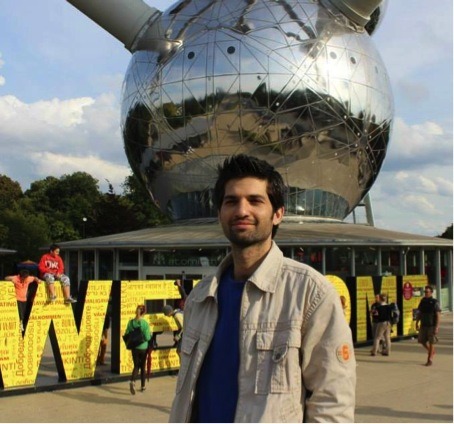
1 note
·
View note